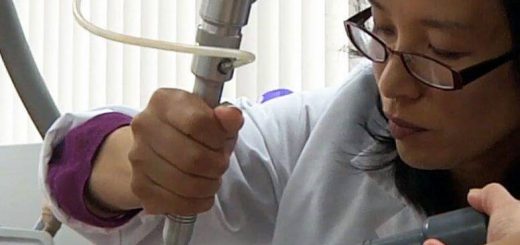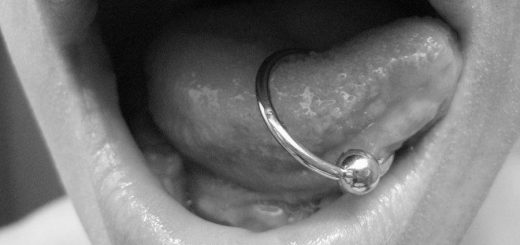How Much Does Tubal Ligation Cost
If Eve had tubal ligation, there will be no human living in this world except for her and Adam. What is tubal ligation? Tubal ligation is a permanent birth control method for women that cuts, blocks, or stitch the fallopian tube to prevent unwanted pregnancy. Tubal ligation is simply an escapade away from motherhood.
Women who decided to not want more children uses different birth control methods. But even the most cautious woman can sometimes be deceived by amorous and passionate night resulting to unplanned pregnancy. That’s why many ladies chose to have tubal ligation as a permanent birth control. Are you one of the thousand women interested on getting ligation? Let’s discuss how much does it cost to get your tubes tied.
What is Tubal Ligation?
Tubal ligation is commonly known as tubal sterilization or “getting your tubes tied.” This procedure is meant to be permanent. Having your tubes tied means rejecting motherhood. In tubal ligation the fallopian tubes are cut, stitched, clipped, cauterized tied, or burned. This means sperms from your partner won’t reach your ovules.
 The cost of tubal ligation coherently varies on your local aesthetic clinic. Tubal sterilization can be done on outpatient clinics, hospitals, health departments, and privately owned accredited health facilities. Gynecological clinics on big cities can be expected to charge high than on less urbanized areas.
The cost of tubal ligation coherently varies on your local aesthetic clinic. Tubal sterilization can be done on outpatient clinics, hospitals, health departments, and privately owned accredited health facilities. Gynecological clinics on big cities can be expected to charge high than on less urbanized areas.
Tubal ligation is testified 100% effective unless ectopic pregnancy occurs; this is rare but not impossible. The average tubes tied price merely starts at $200 to $7,000. A number of factors still affect the price making our estimation tentative.
The cost of tubal ligation deeply varies to what kind of method used. There are two common methods used for ligation: the non-surgical technique and the surgical. Non-surgical ligation can be done with Essure®, an FDA-approved device that is inserted through vagina and cervix to block the fallopian tube done only by medical experts.
Tubal Ligation Methods and Cost
The surgical ligation comes in two methods, according to PlannedParenthood.org. Laparotomy is a ligation method which the practitioner administer local or general anesthesia and creates a small incision below the navel and inserts the laparoscope, a narrow tube device that has light and lens to help practitioner locate the tubes. After so, a small cut is made again near the pubic bones to which the blocking device is inserted to clip the tubes.
On the hand, mini-laparotomy is done after childbirth where the tubes can be easily located by the practitioner and won’t require the use of laparoscope. Anesthesia will be injected to the patient. Then a small cut is made above the pubic line, then the practitioner will locate the tubes, tubes are then cut, tied, or clipped and finally, the incision will be stitched.
The average tubes tied price, as claimed by BabyCenter.com, ranges from $1,500 to $6,000 depending on the method chose. Most insurance company cover expenses for ligation leaving patients pay out-of-the-pocket copayments. The good news is, the Affordable Care Act (AFA) dicts insurance companies to cover contraceptive expenses. Have your insurance checked.
Planned Parenthood department also does ligation with limited discounts depending on the indigence of the patient and the size of the family. Look for the nearest Planned Parenthood department on your area.
So how much does it cost to get your tubes tied? The average cost will get you from $1,000 to $7,000 if uninsured. The cost will still vary on the method performed and the basic charge of the health facility. If insured, the total cost may lessen 40% to 50% excluding co-pays and other added services.
The Risk of Getting Your Tubes Tied
Tubal ligation does prevent you for having unplanned pregnancy but they are certain risks that you must be cautious of. Some Essure® users have had problems where the clips were not attached properly. Though Essure® is proven clinically safe it is recommended to let medical experts exert it.
Before deciding to have tubal ligation, it is best to consult first a board certified practitioner either an ob-gyne or physician. They might give other low-cost contraception or other alternative methods. They will also evaluate if you are medically able for the ligation. You may also ask your local aesthetic clinic for the average tubes tied price so they give you other options that may fit in your budget.
Sophisticated tubal ligation can attract risks. This includes ectopic pregnancy which is considered life-threatening. Other risks includes bleeding and swelling on the incised area, chronic pain, and internal bleeding. If so, it is best to seek immediate medical help. The cost of tubal ligation may increase big time especially when symptoms persist and would require a number of follow up treatments.
Thinking it Over
Tubal ligation does not prevent you from having sexually transmitted diseases (STDs). Wearing of protection is still appropriate. Tubal ligation can be reversed but only with a very minimal chance. Getting your tubes tied is meant to be permanent since reversal is near to impossible. So if you have even a little desire of having kids in the future, don’t get yourself a ligation. Stick to your everyday contraception or seek medical counsel from the expert.
The next time someone asks you how much does it cost to get your tubes tied, you already know what to answer. Tubal ligation is yet the best contraceptive option that guarantees 100% effectivity. The one-time expense will save you from repetitive spending for birth pills, condoms, and morning after pills. It is also the best option for couples who have achieved their desired family size.












